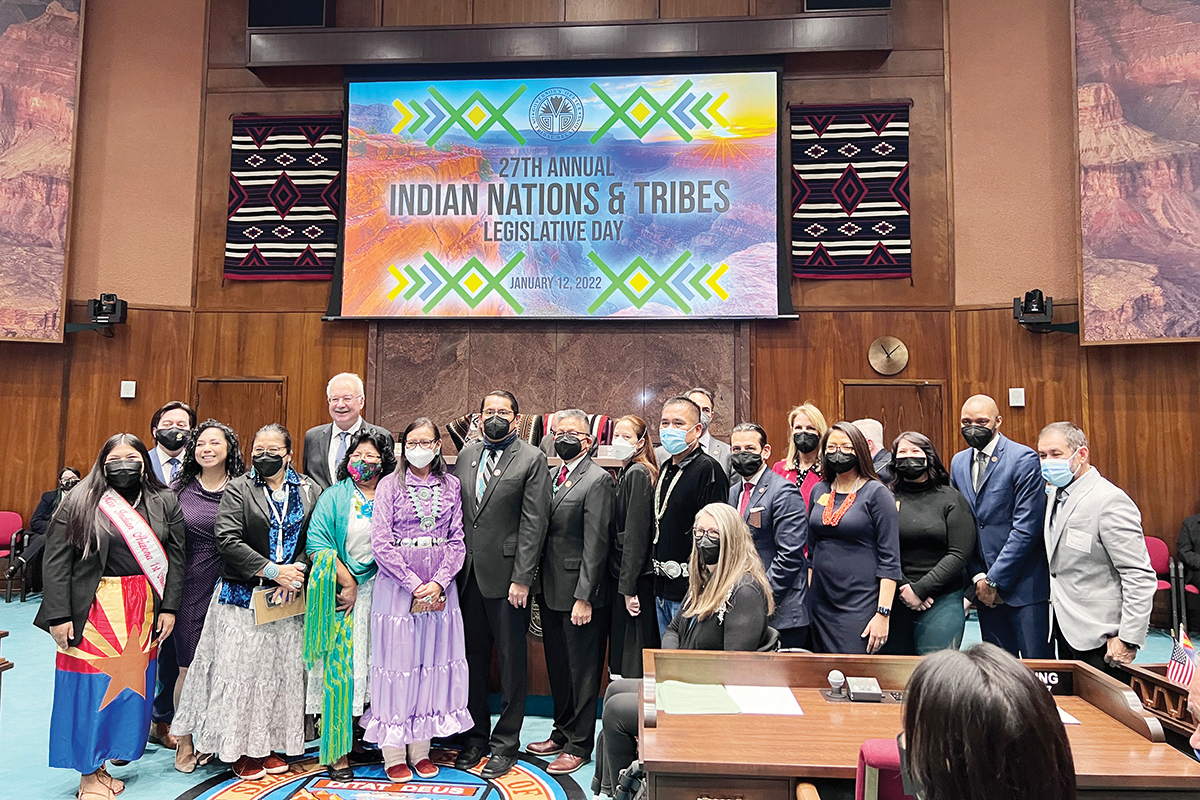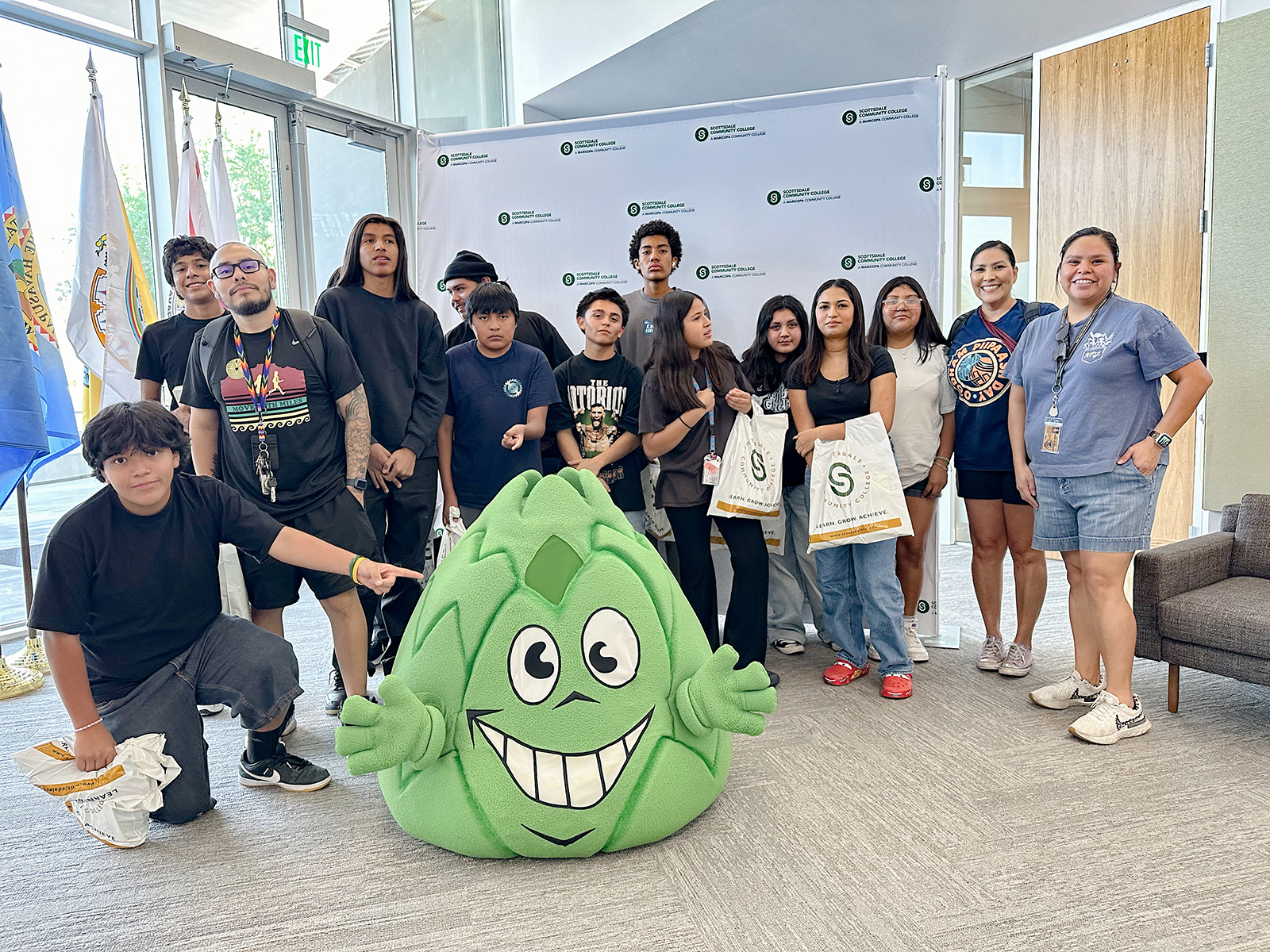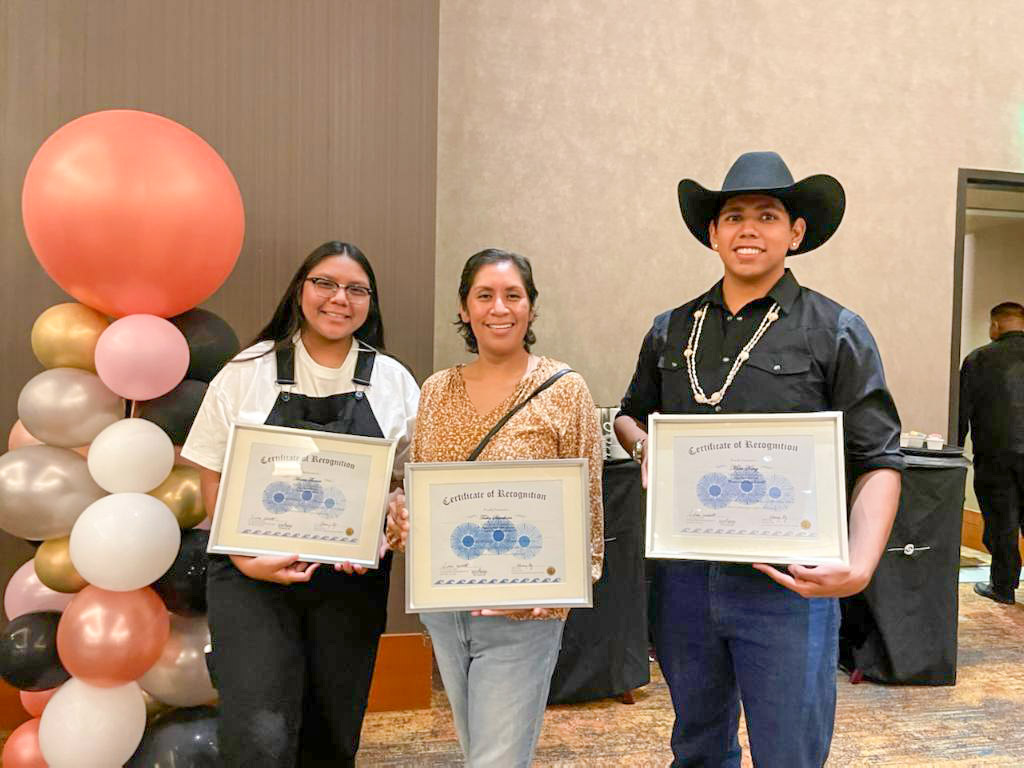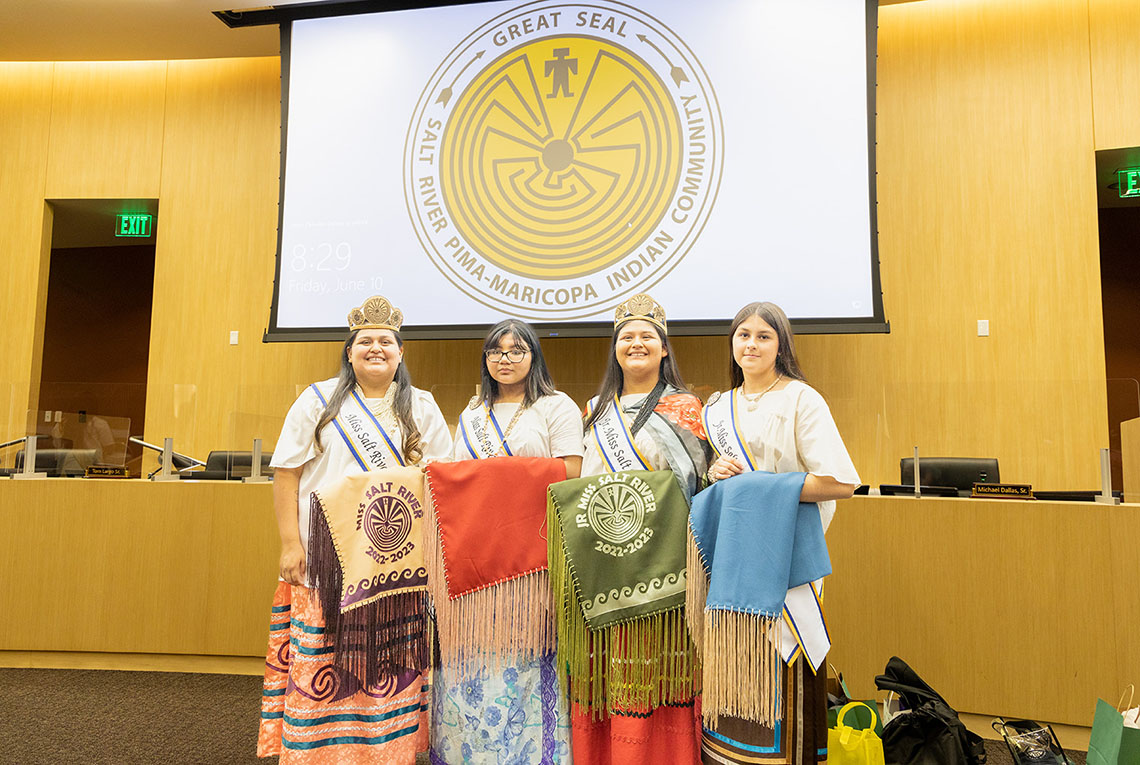VIEWS: 2074
February 3, 202227th Annual Indian Nations and Tribes Legislative Day
Tribal leaders and their communities were invited to return in person for the 27th Annual Indian Nations and Tribes Legislative Day at the Arizona State Capital on January 12 for a Joint Protocol Session hosted by the Arizona House of Representatives, luncheon on the Senate Lawn and afternoon workshops.
Hosted by the Governor’s Office on Tribal Relations in collaboration with the Inter Tribal Council of Arizona, this annual event addresses critical issues in tribal communities within the boundaries of Arizona. This year, Chairwoman Amelia Flores of the Colorado River Indian Tribes, Governor Stephen Roe Lewis of the Gila River Indian Community and President Jonathan Nez of the Navajo Nation gave addresses during the Joint Protocol Session.
To get the program started, Senate President Karen Fann welcomed guests to Indian Nations and Tribes Legislative Day.
“Arizona is a much richer state because of the 22 federally recognized tribes. I had the pleasure of learning from members of all these tribes as a legislator and president over the last 12 years,” said Fann. “As we begin our week of the legislative session, we’ve been blessed with unexpected revenues for this year’s budget, so we are looking ahead to do some meaningful investments in our water, infrastructure and broadband which will benefit the entire state of Arizona.”
Fann talked about the water shortage in Arizona and how it has affected wildfires and agriculture. As new people continue flocking to Arizona, Fann said the legislature wants to make sure that the state has an adequate and sustainable water supply for generations to come. She welcomed tribes to help them come up with solutions on the water shortage.
“In 2019 we passed a major policy, the Drought Contingency Plan. Last session we designated $200 million to invest in that water technology,” said Fann. “Recently, we joined the 500+ Plan, a monumental collaboration with [California and Nevada to conserve even more acre-feet of water to benefit Lake Mead]. As Governor Ducey mentioned in his State of the State address, we are taking greater action and proposing a historic $1 billion investment to secure Arizona’s future for the next 100 years.
“Meanwhile, as the pandemic has shown us that access to broadband for all communities is imperative, we will continue to make sure rural communities are not left out of high-speed internet access, particularly when telehealth is critical at this time with our Native American nations.
“A big thank-you goes out to Governor Lewis of the Gila River Indian Community for his leadership and collaboration with Senator (T.J.) Shope to expand Interstate 10. We want to ensure we continue to invest monies in road repairs and improvements. Our budgets will focus on providing safer routes that are vital in connecting all of our communities together.”
Veterans of Ira H. Hayes American Legion Post 84 posted the colors, followed by the Pledge of Allegiance led by Miss Indian Arizona Alyse Marrietta (Gila River Indian Community). The invocation was given by GRIC Tribal Historic Preservation Officer Barnaby Lewis.
Chairwoman Flores talked about how the Colorado River Indian Tribes witnessed the passage of the Drought Contingency Plan and realized two years later that the cuts under the 2007 shortage guidelines and the additional DCP contributions may have not been enough to protect the Colorado River.
“I and my ancestors have lived and farmed with the waters of the Colorado River since time immemorial. Its water runs through our blood; our traditions, trails, songs and culture, and our very being, are connected to this great river,” said Flores. “Our first and foremost priority for all of the plans that are being developed is to protect the life of the Colorado river as a river. The river is a living being. The protections must include the plants, animals, fish and people who live along the river and not just those who use its waters at distant locations. As the future of water availability in Arizona looks [like it will be less secure], all options for flexible water use must be considered and implemented as soon as possible.”
Governor Lewis provided a perspective on the state of tribal nations in Arizona. Due to the ongoing challenge of the COVID-19 pandemic and the way Indigenous people have been hard hit, 2021 was a tough year for all communities. However, there have been many positive developments, including increased vaccination rates and the continuation of major health and economic initiatives.
“We were able to work cooperatively with the state of Arizona with the help of the Arizona National Guard to operate a number of vaccination clinics,” Lewis said. “We also were able to continue with major initiatives; for example, one of the biggest achievements of the year was the conclusion of our five-year-long efforts to modernize our tribal gaming compacts. The amended compacts have been fully implemented with most tribes, and we are proving we can successfully work together to maintain the kinds of limited gaming that still produce meaningful revenues for tribal nations and the state of Arizona,” said Lewis.
“We were also challenged again by the ongoing drought situation in the Colorado River basin. Runoff on the Colorado River was again drastically reduced due to changes in the climate, resulting in the first-ever water shortage declaration for the Colorado River.”
Recognizing the threat to the entire state, Lewis explained that he called a meeting to determine what they can do to respond to this joint challenge. Working with the state of Arizona, Salt River Project, surrounding states and others rapidly crafted a plan to help further involuntary cuts to the water supply in the state. Funds were provided by the state legislature to shore up Lake Mead immediately, with help of tribes including Gila River, which contributed 130,000 acre-feet of their entitlement to help increase the lake’s elevation by almost 3 feet.
“The key priorities for our community and most of the tribes in Arizona will remain the same in 2022: first, beat back COVID and regain the normalcy in life we all crave. Second, continue our efforts together to save Lake Mead and keep our water supply secure for the future. Third, take advantage of our unique opportunity to fund key infrastructure projects that cross our communities to improve our connections with one another.”
President Nez recalled the last time he spoke at the Indian Nations and Tribes Legislative Day, when he spoke about tribal challenges including infrastructure development, economic opportunities, job creation, access to clean water and so much more.
“Little did we know at that time two years ago when I was last up here speaking that we would be challenged with COVID-19,” said Nez. “Throughout this pandemic, just as our elders did long ago during times of adversity, the Navajo people continue to step up and demonstrate the strength and resilience of our ancestors. We continue to use our way-of-life teachings to push back COVID-19. The front-line warriors—the men and women putting their lives at risks in our hospitals to treat patients and save lives, the EMTs entering homes in unknown situations to help COVID-19–positive people, our Navajo Nation Police officers—continue to protect and serve in the face of this modern-day monster.”
Nez explained that the Navajo Nation was proactive and worked together to implement public health emergency orders and safety protocols, to caution tribal members through public messaging, to advocate for COVID-19 testing kits, and to secure vaccines to help protect people from the virus. Nez recognized those who helped in this fight and thanked them for their dedication and commitment.
President Nez also noted that the state of Arizona should work with tribal nations to mitigate COVID-19 in schools and protect our students, teachers and others.
“This pandemic has also magnified the need for greater infrastructure and access to clean water for Navajo families and homes,” said Nez. “Over the last several years, the Navajo Nation has invested hundreds of millions of our own dollars for water lines and water sanitation systems, and we helped bring running water to our people. Between 30% and 40% of our people live without running water, and many live without electricity; through the CARES Act funds that were received in 2020, we were able to extend water lines to families and connect over 7,000 homes to the electricity grid. The Navajo Nation also appropriated $56 million of our own funds to begin developing the Western Navajo Pipeline to help deliver more water to our communities in Arizona. We are proposing to allocate over $600 million for water infrastructure, electricity and broadband from the hardship assistance that [we received] from the Biden-Harris Administration.”
Nez also discussed the Indian Child Welfare Act, talked about Missing and Murdered Indigenous People, and recognized many Navajo Nation members who are achieving great things working in government at state and national levels, many who serve the country, and those who are pursuing their higher education.
Following the Joint Protocol Session, guests were invited to the Senate Lawn for lunch. The event concluded with a leadership-development workshop for Native youth called Native Youth Know. The workshop featured a virtual presentation by former NASA astronaut John Herrington (enrolled Chickasaw), NABI Nation co-founder GinaMarie Scarpa and more.
For more information about Indian Nations and Tribes Legislative Day, visit https://gotr.azgovernor.gov/gotr/indian-nations-and-tribes-legislative-day.







